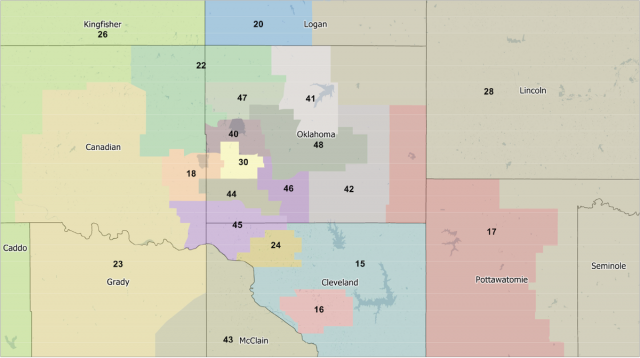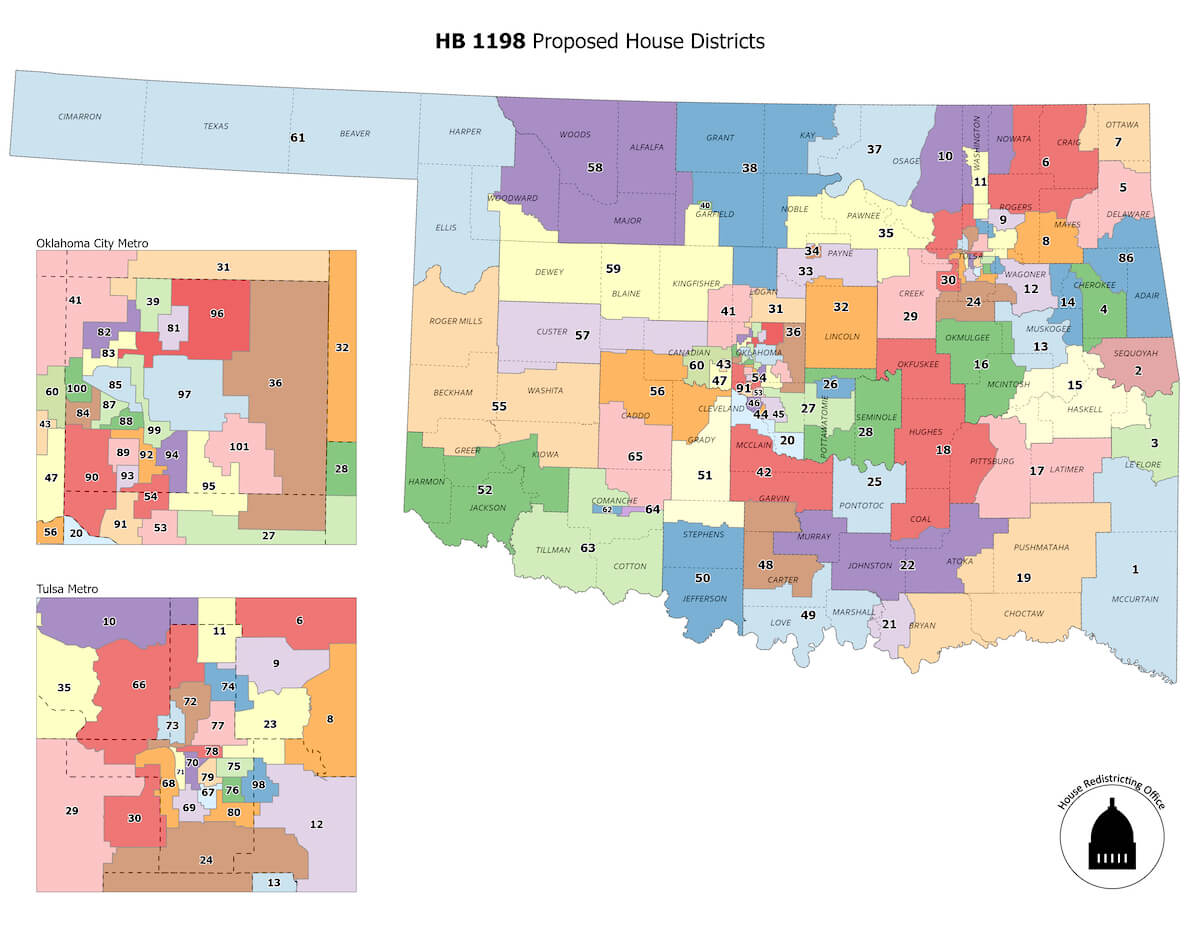

After months of public meetings and consideration, the House and Senate revealed their proposals for new Oklahoma legislative districts today, with those involved in the process saying that community feedback significantly affected the results.
“I think you’ll see a lot of areas that look like a lot of the maps that were submitted (by the public),” said House Redistricting Committee Chairman Ryan Martinez (R-Edmond). “This is truly a map that belongs to the people of Oklahoma and am absolutely happy to present that today.”
Comparing the proposed new maps (linked below) with existing legislative districts, Oklahomans will notice two major changes. House District 36 will move from Osage County to east Oklahoma County. In the Senate, District 18 will shift from the Tulsa area to the Oklahoma County and Canadian County border. The OKC metro area has seen the largest population growth in the state over the past 10 years.
“Our map just visually looks better and has better compactness scores (than the current Senate map),” said Senate Redistricting Committee Chairman Lonnie Paxton (R-Tuttle).
Both chambers of the Legislature will need to approve the new Oklahoma legislative districts before sine die adjournment near the end of May, and redistricting leaders said they will wait at least seven days before hearing the related bills so that Oklahomans can offer further comment.
“We listened to everybody,” Paxton said, noting that input from Norman residents led to Senate District 16 being redrawn to encompass almost the entire city.
Conversely, the city of Lawton will continue to be split between Senate District 31 and Senate District 32.
“Lawton liked the idea that they are a split community now with two different senators,” Paxton said.
Former House Speaker T.W. Shannon represented Lawton from 2006 through 2014 and was retained by the House to provide historical perspective about the 2011 redistricting effort.
“When I was there, Lawton being the largest city in southwest Oklahoma, always felt like it was important for it to have its fair sense of representation,” Shannon said after Wednesday’s press conference. “And the thought was always, ‘The more members that represent Lawton, the better.’ Lawton is one of the most diverse communities in Oklahoma.”
Paxton and Martinez highlighted two other areas where “overwhelming” community feedback affected decisions: Ending Elk City’s split in far western Oklahoma and including it entirely within HD 55, and moving HD 36 — currently held by term-limited Rep. Sean Roberts (R-Hominy) — to eastern Oklahoma County to provide the communities of Luther, Choctaw, Harrah and Jones with more representation.
Martinez and Paxton said no incumbent lawmaker was drawn out of his or her seat.
“The decision on whether incumbents continue to serve will be made by voters, not by the drawing of district lines,” Martinez said.

Plus or minus 2.5 percent
Lawmakers are already preparing for a fall special session to finalize new congressional district maps because official data from the 2020 census has not yet been received from the federal government.
As a result, the legislative districts announced today were based on the U.S. Census Bureau’s 2015-2019 American Community Survey data.
The 48 Senate districts were constructed to contain about 81,935 residents with a deviation of plus or minus 2.5 percent. (The largest proposed Senate district is 1.97 percent above that population figure, and the smallest district is 1.87 percent below.)
In the House, the 101 districts were drawn to feature an ideal population of 38,939 residents with the same 2.5 percent parameters. (The largest proposed House district is 1.68 percent above that population figure, and the smallest district is 1.91 percent below.)
Map links for new Oklahoma legislative districts
Full maps for the proposed new Oklahoma legislative districts can be found at the following links:
The Oklahoma Constitution specifies a deadline for legislative apportionment in Article 5, Section 10:
The apportionment of the Legislature shall be accomplished by the Legislature according to the provisions of this article, within ninety (90) legislative days after the convening of the first regular session of the Legislature following each Federal Decennial Census. If the Legislature shall fail or refuse to make such apportionment within the time provided herein, then such apportionment shall be accomplished by the Bipartisan Commission on Legislative Apportionment, according to the provisions of this article.
The U.S. Census Bureau said in February that it will deliver states their census data by Sept. 30.




















